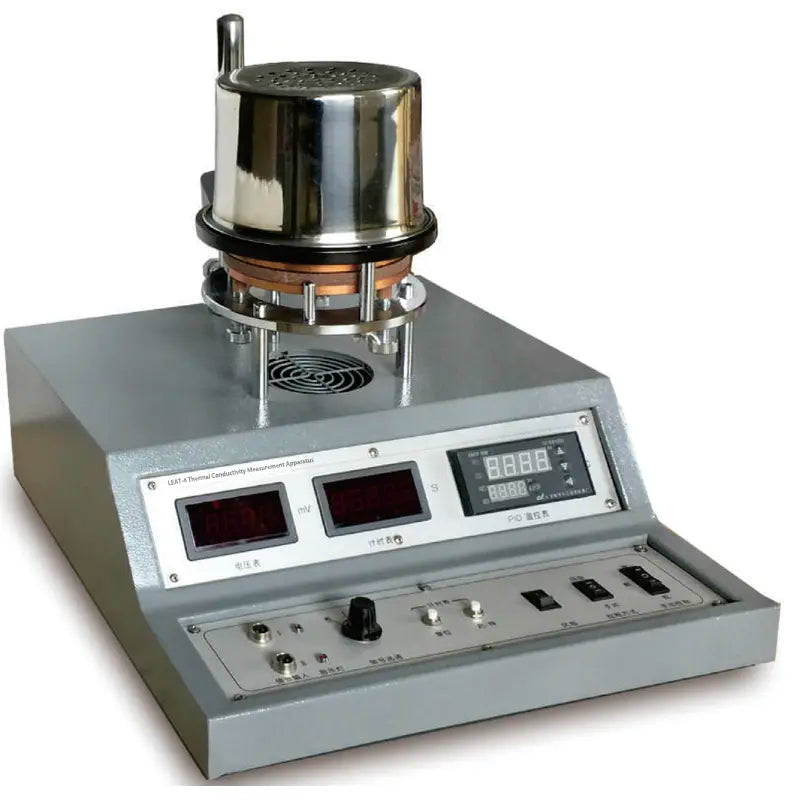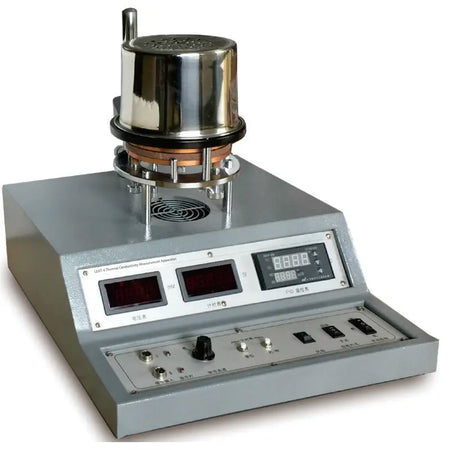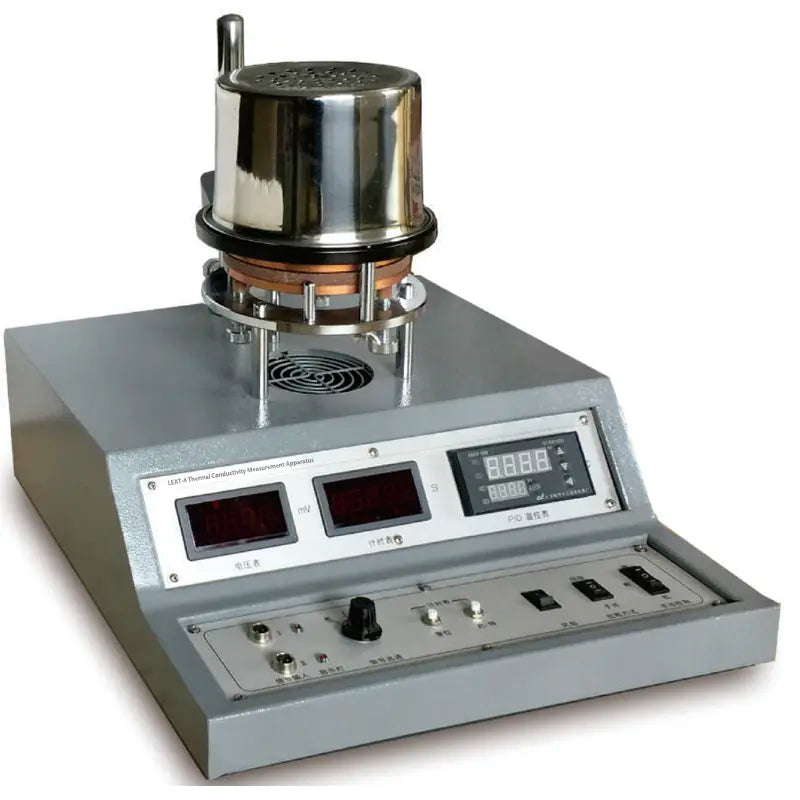LEAT-4 Thermal Conductivity Measurement Apparatus
Couldn't load pickup availability
Thermal Conductivity Measurement Apparatus
There are two method to measure thermal conductivity- steady-state method and dynamic method, this instrument is steady-state method type. In the steady-state method, we heat the sample first, and the temperature difference inside the sample makes the heat transfer from high temperature to low temperature, and the temperature of each point inside the sample will change with the heating speed and heat transfer speed; when the experimental conditions and parameters are properly controlled to make the heating and heat transfer process reach the equilibrium state, a stable temperature distribution can be formed inside the sample The thermal conductivity can be calculated from the temperature distribution.
Main technical features:
1. It adopts isolated low-voltage heating, which is safe and convenient to use;
2. Using national standard thermocouple to measure temperature and Teflon flexible protection tube, the thermocouple is not easy to break;
3. The thermoelectric potential is measured by high internal resistance, high precision, low drift amplifier and three and a half digital voltmeter;
4. PID temperature control heating is used to stabilize the temperature of the heating copper plate and improve the accuracy of the experiment.
Main technical parameters:
1. Digital voltmeter: 3.5 bit display, range 0 ~ 20mV, measurement accuracy: 0.1% + 2 words;
2. Digital stopwatch: 5-digit stopwatch with a minimum resolution of 0.01s;
3. Temperature control range of temperature controller: room temperature ~ 120 ℃;
4. Heating voltage: high end ac36v, low end ac25v, heating power about 100W;
5. Heat dissipation copper plate: radius 65mm, thickness 7mm, mass 810g;
6. Test materials: duralumin, silicone rubber, rubber board, air, etc.
7. The thermocouple freezing point compensation circuit can be added to save the trouble of using ice water mixture;
8. Other temperature sensors can be used to measure the temperature, such as PT100, AD590, etc.



